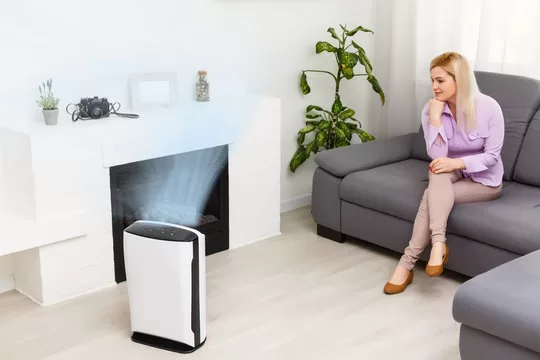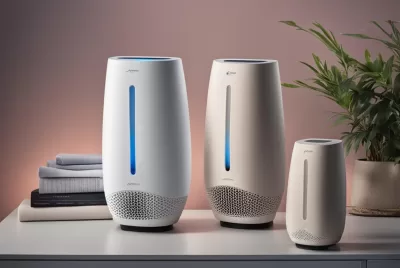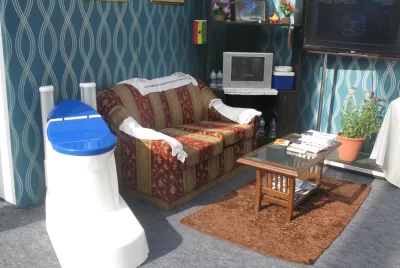What is the Purpose of an air Purifier
"We may earn a commission for purchases made using our links. Please see our disclosure to learn more."
In a world where air pollution is a growing concern, the purpose of an air purifier is to improve indoor air quality by removing pollutants and creating a healthier environment for occupants. Many people spend the majority of their time indoors, where air quality can often be compromised. Air purifiers play a crucial role in this by reducing or eliminating indoor air contaminants, providing cleaner and healthier air for individuals.
Why Clean Air Matters
Clean air is essential for maintaining good health and well-being. Poor indoor air quality can lead to a range of health issues, including allergies, respiratory problems, and aggravated asthma symptoms.

Defining Air Purifiers
An air purifier is a device designed to remove contaminants from the air in a specific area. These contaminants can include dust, pollen, pet dander, smoke particles, and volatile organic compounds (VOCs). By capturing and filtering out these pollutants, air purifiers contribute to creating a healthier indoor environment.
How Air Purifiers Operate
Air purifiers use various technologies to clean the air, such as filtration, electrostatic precipitation, and ionizing. Each method targets different types of pollutants and operates in distinct ways to purify the air.
Overview of Air Purifier Operation
Air purifiers draw in air from the surrounding environment and pass it through filters or purification technologies to remove contaminants. This process contributes to improved air quality.
Methods of Purification
- Filtration: Captures particles in a filter as air passes through.
- Electrostatic Precipitation: Uses an electrostatic charge to capture particles, which are then attracted to oppositely charged plates within the purifier.
- Ionization: Releases negatively charged ions into the air, which attach to positively charged particles, causing them to fall to the ground or stick to nearby surfaces.
Components and Filters Used in Air Purifiers
Air purifiers consist of various components, including fans, filters, and purification technologies. Filters, such as pre-filters, HEPA filters, activated carbon filters, and UV filters, play a crucial role in capturing and removing pollutants from the air.

Types of Air Purifiers and Their Structures
Air purifiers come in various types, each with unique structures and mechanisms for purifying the air. These types include HEPA air purifiers, activated carbon air purifiers, UV air purifiers, and ionizer air purifiers.
| Type of Air Purifier | Structure | Mechanism |
|---|---|---|
| HEPA Air Purifier | Consists of a HEPA filter that traps particles as air passes through | Captures 99.97% of particles 0.3 microns or larger |
| Activated Carbon Air Purifier | Contains activated carbon filter to adsorb odors and gases | Absorbs odorous and gaseous pollutants |
| UV Air Purifier | Utilizes ultraviolet light to deactivate and kill airborne pathogens | Destroys viruses, bacteria, and mold spores |
| Ionizer Air Purifier | Emits negative ions to charge particles, causing them to fall or stick to surfaces | Causes particles to clump together and settle out of the air |

Health Benefits of Using Air Purifiers
Using an air purifier offers numerous health benefits, including reducing allergy symptoms, alleviating asthma triggers, minimizing the spread of airborne viruses, and creating a healthier environment for individuals with respiratory conditions.
Removing Air Pollutants
Air purifiers help remove a wide range of particles and gases, including dust, pollen, pet dander, mold spores, cigarette smoke, VOCs, and bacteria. They employ different methods to effectively remove these pollutants from the air, contributing to a cleaner and safer indoor environment.
Choosing the Right Air Purifier
Selecting the right air purifier involves considering the size of the area it will cover, the types of pollutants it targets, and the specific needs of the occupants. HEPA air purifiers are often recommended for their high efficiency in capturing airborne particles.
Who Should Use Air Purifiers
Air purifiers are beneficial for individuals with allergies, asthma, pets, smokers, newborns, and the elderly. Additionally, anyone looking to improve indoor air quality and create a healthier living environment can benefit from using an air purifier.
Limitations and Effectiveness
While air purifiers are effective at removing many airborne pollutants, they may have limitations in addressing certain gases and odors. Understanding the capabilities and limitations of an air purifier is important before making a purchase.
Determining Size and Placement
Selecting the right size air purifier for a specific area is crucial for optimal performance. Proper placement of the air purifier can significantly impact its effectiveness in cleaning the air.
Maintaining and Maximizing Efficiency
Regular maintenance, including replacing filters as recommended, keeping the unit clean, and following the manufacturer’s guidelines, is essential to ensure the air purifier continues to function effectively.

Real-Life Impact
Personal anecdotes from individuals who have benefited from using air purifiers can provide valuable insight into the real-life impact of these devices.
In conclusion, the purpose of an air purifier is to improve indoor air quality by removing pollutants and creating a healthier environment for occupants. Understanding the operating principles, types, benefits, and limitations of air purifiers is crucial in choosing the right device for specific needs and maximizing its effectiveness in promoting clean and healthy air. Additionally, including real-life experiences and testimonials from individuals who have used air purifiers to improve indoor air quality can provide a personal touch and demonstrate first-hand experiences with the topic.




